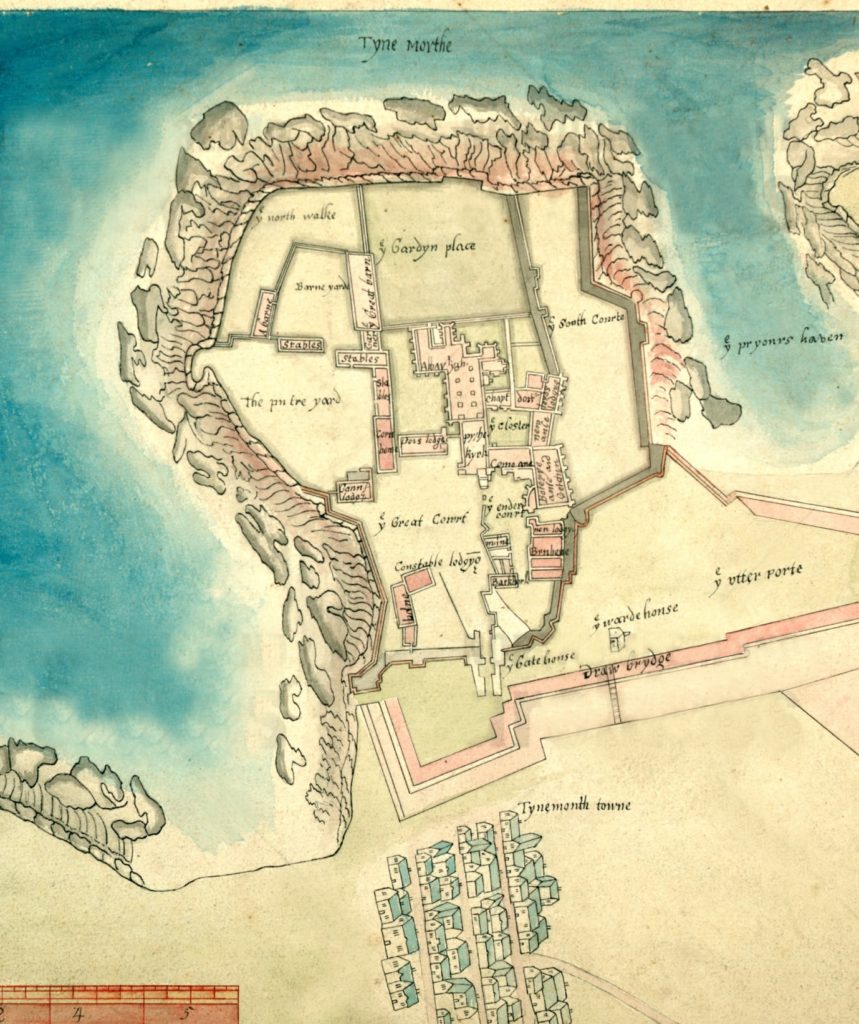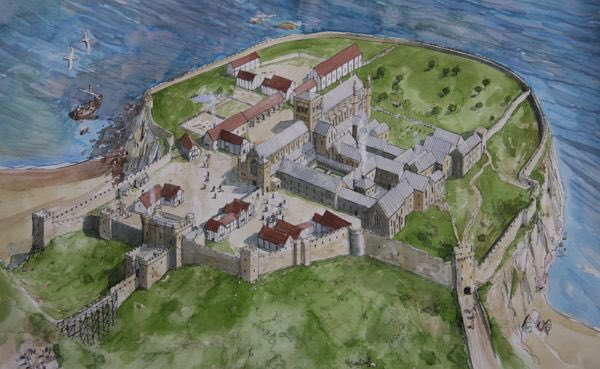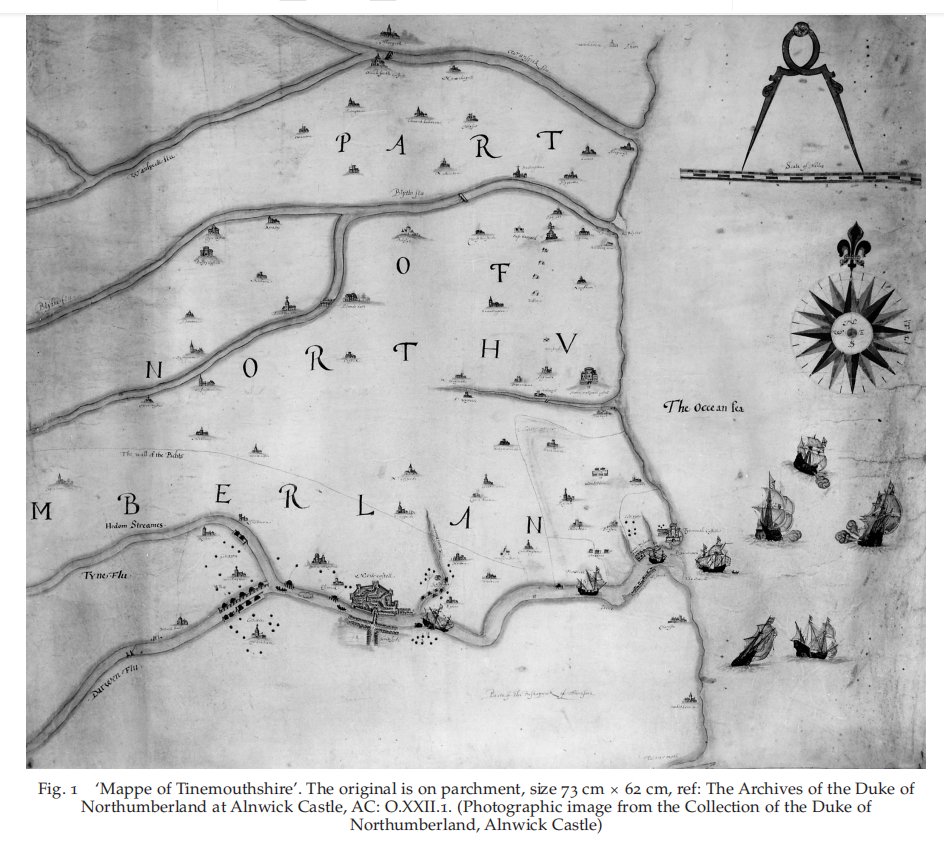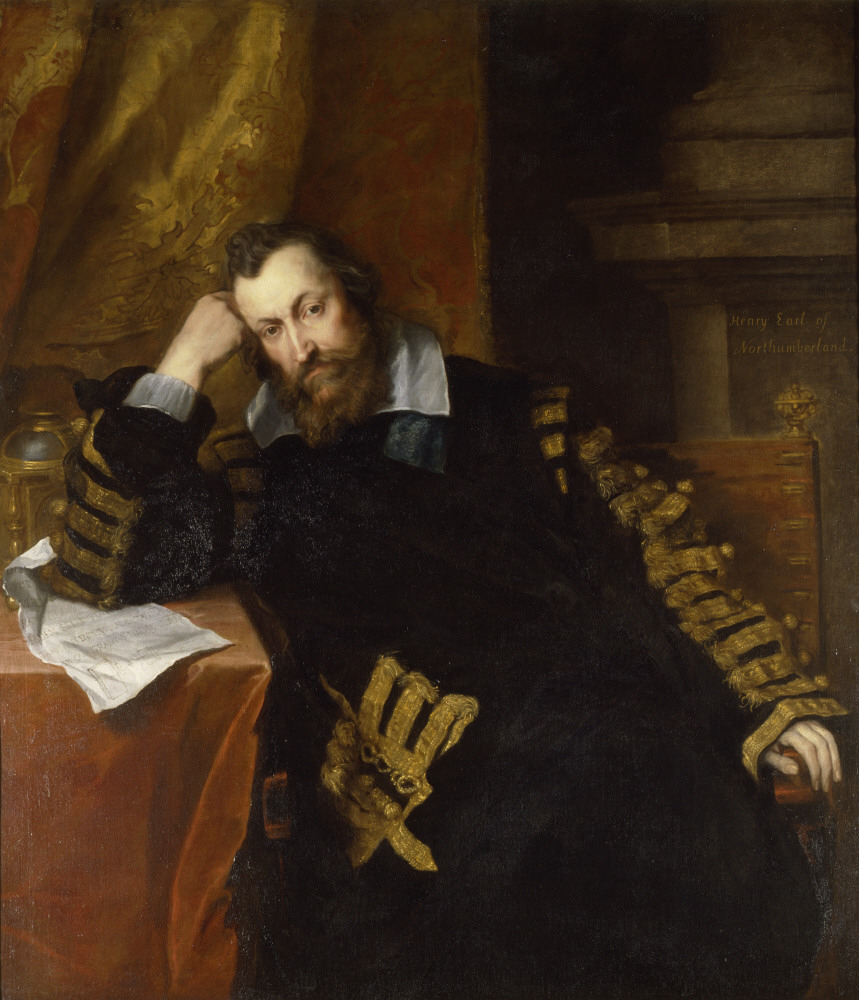
The following is a summary of a fascinating trial in 1593 that took place against the backdrop of Tynemouth Castle and the lucrative North Shields salt pans. The case was between the feuding parties of the Henry Percy, Earl of Northumberland, the complainant, and the brothers of Peter Delaval, the defendants.
What was the Star Chamber?
The Star Chamber was a law court that was used to temper the power of the nobility, which local courts were not able to do successfully. Over time, it came to serve as the monarch’s personal instrument of power and oppression, where verdicts could be passed down expediently and unopposed. The Star Chamber rose to prominence during the Dissolution of the Monasteries, gaining despotic power that enabled Henry VIII to break from the Church and acquire its property. In the 17th century it was abolished by the Puritan leaders of Parliament prior to the Civil War. The Star Chamber was a notorious and greatly feared institution for its corrupt and arbitrary rulings, as well as its “cruel and unusual punishments”, but in the late Tudor era we’re dealing with here, it was still very much a valuable and respected authority.
Court of Star Chamber of Elizabeth I (1593)
Henry Earl of Northumberland v Josuah Dalyvell, Raphe Dalyvell, Clement Dalivell, Cuthbert Bates, James Reemes, Thomas Ogle, Raiphe Ogle, John Person, William Person
Bill of Complaint:
These gentlemen and around thirty others, armed with:
“Jackes of plate, with privie Cotes, steale capps, dagges, Callivers, goonnes, goone powder, pelletes horsemen staves, forrest bills, longe piked staves, Bowes, arrowes, swords, daggers, and other Weapons”
were accused of attempting a surprise raid on a garrisoned Tynemouth Castle, on 19th July 1593. In addition, it was claimed there were a further 120 men stationed nearby and lying in ambush.
Here’s what is said to have happened:
“to the greate terror and feare of your maiesties Subiectes inhabiting the Townes and places neere to the said Castell, did unlawfullie, ryoutouslie rowtouslie and in warlike manner assemble themselves at Tynmouth aforesaid uppon the grounde next adioynynge to the utter wales of the said Castell, but for what intent or purpose your Subiect knoweth not howbeyt the said p[er]sons so assembled did at and from the northe ende or side of the said Castell then and there unlawfullie, ryoutouslie, and rowtouslie take and carrie awaie div[er]se and sondrie stones of your maiesties called Harth[ston]es for theire owne proper use and behoff notwithstandinge they were then and there forbydden so to doe in the name and behoff of your maiestie; And in the taking & carringe awaie of the said stones they the said ryotous persons did use and utter speaches of this effect that they wold take and carrie awaie the said stones, or otherwise wold hazard theire lives and [?skinnes?], And for the better p[er]formance of theire said unlawfull and ryotous purpose, they the said ryotous persons hadd at the same tyme and daie caused and procured diverse other persons to the nomber of a hundred and Twentie in like warlike manner arraied, to assemble themselves in troopes and companies neere unto the said Castell and to lie in ambusshe in secrete places neere the said Castell that if need shoulde require or resistannce were made by your ma[jesties] servantes Subiectes or Souldiers of the said Castell against the saide unlawfull enterprises, then they might come and assiste the said ryotous persons in theire said unlawfull enterprises contrarie to the lawes and statutes of this your heighnes Realme”
The Earl’s attorney, Friar Moore, asserts that this mob tried essentially to storm Tynemouth Castle in order to steal stones for the salt pans at North Shields. He argues that this is particularly dangerous behaviour around one of the Queen’s fortifications especially one so close to Scotland, which could cause commotions and great uprisings there. He calls for these men to be arraigned before the court to answer for their crimes and suffer severe and fitting punishment for these offences.

Answers of Josua Delavale, Clement Delavale & Thomas Ogle:
The defendants denied the charge. Firstly they explain the business of Peter Delaval, elder brother to Joshua, Clement and Raphe.
“one Peter Delavale was lawfully possessed of C[er]taine Cole mynes in Preston Munck Seaton East Chirton and Midle Chirton under the demise & grannte of the Queenes most excellent ma[jestie] that now is and occupyed the same as fermor and for a certaine rent yearly pa[y]able to her ma[jestie] And was then likewyse possessed of divers salt pannes standing upon the River of Tyne in the North Sheales under her ma[jesties] grannte as as fermor to her ma[jestie] And of other salte pannes standing up[on] the said River upon certaine ground theire w[hi]ch the said Peter Delavale lately purchased of the Queenes most excellent ma[jestie] that now is All w[hi]ch p[re]misses weare parte of the possessions of the late dissolved monast[ery] of Tynmouth in the Countie of Northumberland”
Due to the monopoly on the sale of coal held by the Corporation of Newcastle, Peter Delaval employed most of the coal he mined in the 8 salt pans he operated at North Shields, in the area which is today at the bottom of Tanners Bank. 4 of these pans he owned outright, while the other four were jointly rented from the Queen. These grounds and the assets therein had come into the possession of the crown after her father, Henry VIII, had seized the property of the Prior of Tynemouth around sixty years earlier.
In operating salt pans it was necessary to use a large quantity of hearth stones to contain the fire beneath them. These stones had in the past been taken without hindrance from Prior’s Haven, presumably from Freestone Point to be precise, but also from the Bear’s Head Rock near the top of the Longsands, and at several other points on the shoreline, more than a mile distant from the castle.
That was until 25th June 1593, a month before the incident in question here, when they were apprehended by Thomas Poore, Deputy Captain of Tynemouth Castle, and a company of men who confiscated a boat load of hearth stones from the servants of Peter Delaval and warned them not to try this again.
Then on the 19th July, Delaval’s men were probably at Bear’s Head on the Longsands when they were approached by Thomas Poore again, with 18 men armed with “muskettes halbartes pykes Bowes and other weopens”. Poore commanded them to desist from taking stones and to leave the area, which they refused to do. At this point Poore ordered his men to ready for an assault. The defendants protested that they intended no harm and were providing these stones for Peter Delaval who was in lawful possession of the salt pans. When Poore perceived this, he asked them to talk with him, which they did without coming to any agreement, before Poore departed and the defendants carried away their stones.
Who Was Peter DeLaval?

‘A Map and Its Meaning’ by Clavering & Rounding, Archaeologia Aeliana, Series 5, Vol 40 (2011), shows Peter Delaval’s salt pans at the Pow Burn estuary and has this to say about his mining enterprise:
“In 1590, the Preston colliery was owned by Peter Delaval, a scion of that family, who had been apprenticed to a London merchant. He was obviously a capable man, because he was persuaded to return to the north to manage the Earl’s estates in Tynemouth. He bought property there and, as ‘farmer of the Queen’s mines in Preston’, developed the colliery both for himself and on behalf of the earl.”
The relationship between the Earl and Delaval enjoyed a reversal after this enmity between them. Peter was appointed deputy captain of Tynemouth Castle when Poore was dismissed soon after the trial. And as we see from the quote, they were partners in the coal trade and seemingly involved in some smuggling in getting coal to sea via Willington Quay in order to circumvent the burgesses of Newcastle. Eventually in 1599 their relationship turned sour and Delaval was dismissed from the role after being betrayed by the Earl to the authorities at Newcastle. In 1605 the Earl became implicated in the Gunpowder Plot through his kinsman Thomas Percy, whom he also made deputy of the castle. Subsequently the King dispossessed Henry of Tynemouth Castle along with his castles at Alnwick, Prudhoe and Cockermouth, before he was imprisoned in the Tower, ironically after a trial in the Star Chamber.*
*Craster, History of Northumberland (1907) p173

Deposition: Joshua Delavale of Ryvers Greene
Joshua Delaval denied assembling an armed mob, but explains that they had five or six labourers with them who had a case of pistols as well as halberds and pickaxes for digging the stones out. A few unarmed boatmen were also present. The men were carrying swords and daggers and wearing some steel plate as they feared resistance to their work from Thomas Poore and his troops. It was alleged by Poore that Peter Delaval was intent on crossing the Earl. Joshua Delaval denied this and said Poore spoke “untruly”. Poore then challenged both Joshua Delaval and Peter, who wasn’t present, to a fight. It appears at a later date, he then set upon Joshua Delaval on Walker Moore, two miles from Newcastle. Armed with swords and daggers they fought hand to hand until Delaval disarmed Poore, afterwards returning his weapons to him.
The defendant closes with the argument that Poore acted unlawfully and riotously when the defendant was simply taking stone from a place that they had done so for many years, while the reason they were armed was because Poore had threatened them before.
Conclusion
Seeing as we can’t typically find judgements from the Star Chamber, I’ll give my interpretation of this dispute.
I would guess the chamber found the defendants not guilty, as Peter Delaval was in good favour with the Crown, as key coal and salt supplier to London. He even rented 4 of his salt pans from the Queen, so stifling his work was also threatening royal revenues.
The blame in the depostions is being placed squarely on Thomas Poore rather than the Earl of Northumberland. They don’t want to become sworn enemies of the Earl, but they do feel wrongfully accused.
The following points ought to be considered:
- A key premise of the complaint seems false in that it’s said the men go to the north side of the outer walls of the castle. That place is inaccessible and the land at the front of the gatehouse is too small and would not be a place to take stone. They were clearly at the north end of the Longsands and therefore while still on the Earl’s land, not invading the castle. The Earl portraying this as the Castle being under attack is misleading and false. There’s an implication of treason in that an attack on the castle and the Earl’s soldiers is an attack on the Queen and it is unbelievable that these men would attempt this.
- The claim about this kind of behaviour sparking uprisings in Scotland is a big stretch and its inclusion weakens the argument.
- The list of weaponry seems exaggerated and the claims of a further 120 men lying in ambush, far fetched.
- It appears hearthstones had been taken from the shoreline for use in salt pans for a very long time. Thomas Poore produced no warrant, when asked to, that would give him the right to stop the removal of these stones.
- The defendants’ claim that their weapons were carried in self defence should be taken on face value given the prior threats from Poore. Ultimately they’re protecting their work and income.
Therefore, in my view, the Earl brought this case more to make a futile point against his former business associate and try to censure the Delavals. It is high unlikely to have led to a conviction.
The Star Chamber Project
Please check out the great work that the Star Chamber Project have done to transcribe and digitise thousands of cases. It represents a mammoth contribution to our knowledge of this august, infamous, arcane yet deeply intriguing institution. Thank you to Dave King of the Twitter account Northumberland & Durham Historical Docs for transcribing this case and sharing it with me.
About the project: https://waalt.uh.edu/index.php/STAC_About_this_project
Full transcript: https://waalt.uh.edu/index.php/STAC_5/N2/7




